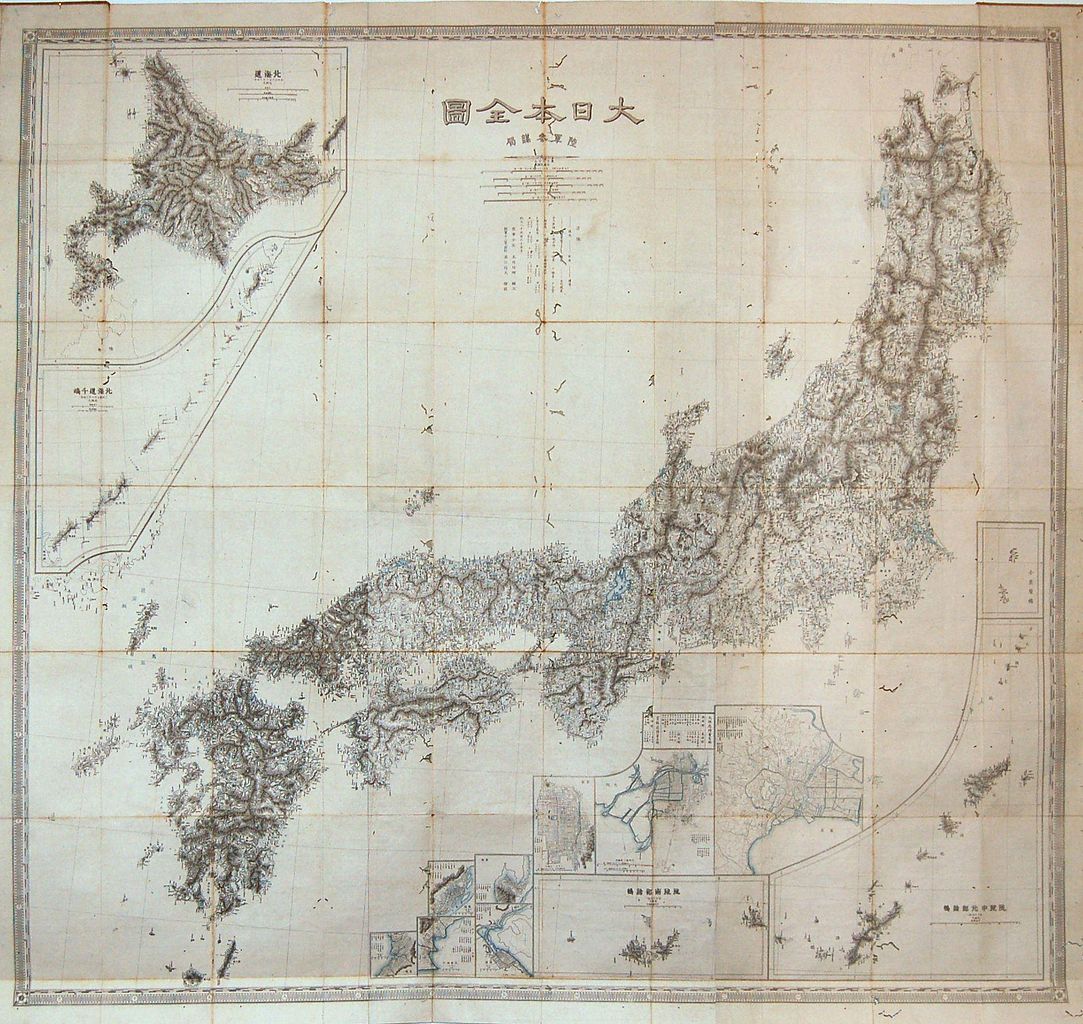“the Dutch traders also brought books to Dejima with them. Over time the body of knowledge from these texts that grew among a small group of Japanese scholars became what historians call “Dutch studies.””
“the mental map for Japan’s future empire building and territorial imaginings began to take shape through this means of knowledge gathering.”
“the Tokugawa government exhibited a new form of curiosity and began to order its officials to create new kinds of maps—for Japan at least—that would make clear to foreigners who had already drawn Japan onto their maps that the realm was not up for grabs.”
“The government wanted maps that could express Japanese rule over Japan in ways that made sense to foreigners”
“Russia had begun to challenge the Tokugawa claim that Ezo (known today as Hokkaido) was Japanese territory, and the Tokugawa government wanted to assert its control.”
“Ezo would become the young Meiji government’s first colony for imperial expansion. The Meiji government renamed it Hokkaido (literally, Route to the Northern Sea) when they took control in 1869.”
” ”
”
“The colonization of Hokkaido, however, required an entirely new way of agriculture and a pioneering technique modeled heavily on the American experience first in New England and then as part of the United States’ espousal of Manifest Destiny.”
“The United States’ frontier army, for example, provided the guide for Japan’s frontier militia in Hokkaido, which was discrete from the imperial army and created for the suppression of the indigenous peoples of Hokkaido.”
“Japan’s overthrow of the Ryukyu king in 1879 and annexation of his territory (collectively today called Okinawa) was part and parcel of the era’s evolving “southern advance” strategy.”
“The ramifications of this moment continue to be felt to this day with Okinawan territory treated as a fortified buffer zone to protect Japan’s main islands.”
“Three factors stand out as helpful for considering Japan’s strategic space today: first, the importance of understanding Japan’s initial nation-building effort as a “defensive empire”; second, the significance that Japanese leaders placed on engaging with global trends and norms of the times; and third, ideological doctrines of Japanese superiority vis-à-vis other Asian races, which overruled more cautiously planned maps to the point of overextension.”
Navigation
Backlinks
There are no backlinks to this post.